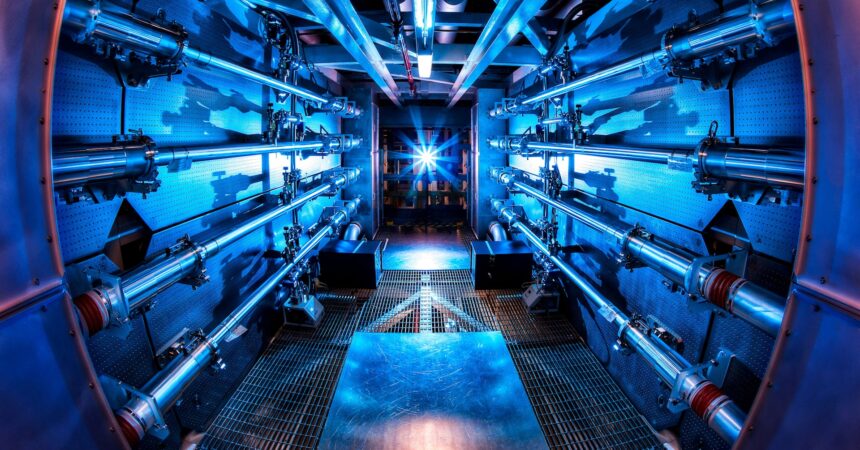I stepped into the cavernous hangar just outside Oxford, England, where engineers in white lab coats navigated around a gleaming metal sphere. This was the Joint European Torus (JET), until recently the world’s largest fusion experiment. Though now decommissioned after four decades of groundbreaking research, its legacy powers forward through a new generation of fusion projects drawing unprecedented investment.
“We’ve been chasing this dream for over 60 years,” Dr. Ellen Roche told me as we observed the decommissioning process. A veteran fusion physicist who’s witnessed the field’s evolution since the 1990s, Roche’s eyes still light up when discussing recent breakthroughs. “For the first time, I believe I’ll see commercial fusion energy in my lifetime.”
Global investment in fusion energy has reached $6.2 billion in 2025, marking a 40% increase from 2022 levels and the steepest rise since record-keeping began, according to the Fusion Industry Association’s annual report released last week. This surge in funding is reshaping what was once primarily government-driven research into a hybrid field where private capital is increasingly setting the pace.
The scientific promise is tantalizing: harnessing the same process that powers our sun to generate nearly limitless clean energy without the long-lived radioactive waste of conventional nuclear power. Unlike fission, which splits atoms, fusion forces light elements like hydrogen together at extreme temperatures, releasing enormous energy in the process.
In December 2022, researchers at the Lawrence Livermore National Laboratory in California achieved what many considered impossible—a fusion reaction that produced more energy than was used to initiate it. This scientific milestone, called ignition, electrified the investment community.
Sam Wurzel, technology-to-market advisor at the U.S. Department of Energy’s ARPA-E program, describes the current atmosphere as “post-ignition euphoria,” but cautions that substantial engineering challenges remain before commercial viability. “We’ve proved the physics works. Now comes the harder part—making it economical and practical.”
When I visited Commonwealth Fusion Systems’ new campus outside Boston this spring, construction crews were preparing foundations for what will become their SPARC demonstration reactor. The MIT spinoff has raised over $2 billion since 2018, including investments from Bill Gates, Google, and oil majors like Equinor.
“The timeline has compressed dramatically,” explained Mira Rodericks, a Commonwealth engineer who walked me through their prototype magnet facility. “What was once a 30-year horizon is now targeted for this decade.”
The new investment landscape has been transformed by private fusion companies with ambitious timelines. Where government-led international projects like ITER in France operate on multi-decade schedules, startups promise demonstration plants by 2028-2030 and commercial power within 15 years.
Behind this acceleration is a fusion industry that has grown to over 40 private companies globally, concentrated primarily in the United States, United Kingdom, and increasingly, East Asia. The technical approaches vary widely—some use conventional tokamak designs with donut-shaped magnetic chambers, while others explore alternative concepts using lasers, Z-pinches, or magnetic mirrors.
“It’s actually healthy to have this diversity of approaches,” Dr. Kathryn McCarthy from the UK Atomic Energy Authority told me during a tour of their Culham facilities. “We don’t yet know which path will reach commercial viability first.”
Despite the investment boom, significant hurdles remain. Materials must withstand plasma temperatures of over 100 million degrees Celsius. Fusion reactions require perfect containment within powerful magnetic fields. And the economics still need to improve dramatically—current prototypes cost billions for relatively small power outputs.
The most sobering assessment comes from the International Energy Agency, which doesn’t forecast fusion contributing meaningfully to global electricity generation before 2050. This timeline creates tension between investor expectations and scientific reality.
Indigenous clean energy advocate Joseph Mountain, whom I interviewed at a recent climate conference in Vancouver, expressed mixed feelings about fusion’s promise. “We need climate solutions now, not perfect technologies decades away,” he said. “Still, if fusion delivers even half of what’s promised, it changes everything for future generations.”
While some climate activists question whether fusion funding diverts resources from deploying existing renewable technologies, others see it as complementary. Unlike intermittent wind and solar, fusion could provide baseload power that maintains grid stability—a role currently filled largely by fossil fuels.
The industry’s growth has sparked policy responses. The U.S. Department of Energy launched a milestone-based public-private partnership program allocating $50 million to fusion companies that meet specific technical targets. The European Union expanded its fusion strategy beyond ITER with dedicated funding for private ventures. Meanwhile, China and Japan have redoubled national fusion initiatives with greater industrial partnerships.
For communities facing climate impacts today, fusion’s timeline creates an ethical dilemma. During a recent reporting trip to Canada’s Arctic, where warming occurs at triple the global average rate, Inuit elder Nasivvik Okpik reminded me that some places can’t wait decades for energy transitions. “The ice is going now,” she said, pointing to shoreline erosion threatening her coastal village.
Perhaps the most realistic perspective comes from Dr. Roche back at JET. “Fusion isn’t a silver bullet for current climate targets,” she acknowledged. “But for a truly sustainable second half of this century, we need energy sources that can scale globally without environmental compromise. That’s worth investing in.”
As private capital continues flowing into fusion development, the question isn’t whether the science works—it does—but whether the engineering and economics can be solved quickly enough to matter in our climate-constrained future.






